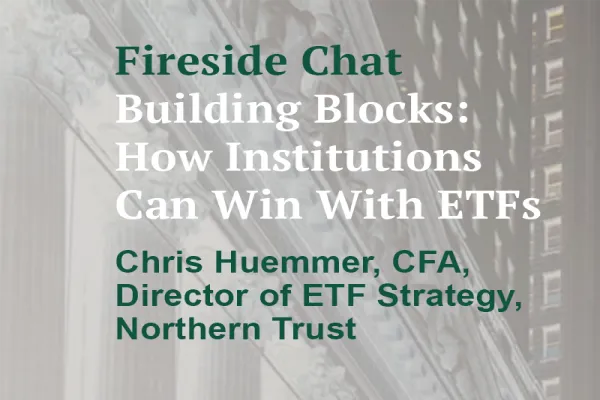Sector exchange-traded funds have long been a way for registered investment advisers to add diversification to client portfolios without taking on company risk. But now, as more granular sector offerings come to market, sector ETFs may also give RIAs an opportunity to play out tactical investment themes while maintaining the tax efficiency and liquidity that such funds are known for. By using traditional broad-sector ETFs with niche-subsector ETFs as a complement, advisers can build a portfolio that works with both long- and short-term market trends.
ETF provider WisdomTree Investments broke new ground with sector funds that moved beyond the traditional broad-based approach, which provides exposure to hundreds of companies across a variety of subsectors in industries like technology and energy, into niches such as global natural resources. So far in 2016, those niche funds have drawn the majority of asset flows to $44.6 billion WisdomTree as investors and wealth managers try to navigate newly volatile markets, says Christopher Gannatti, associate director of research at the New York–based firm.
“In this market environment, we’ve seen most of our inflows going into unlikely ETFs,” Gannatti explains. “Our Japan Hedged Real Estate ETF [DXJR] has brought in the most money this year, with $121 million net inflow year-to-date.”
Investors in the $152 million DXJR are aligning themselves with the Bank of Japan, taking on broad real estate exposures while interest rates are negative and moving away from Japanese government bonds, which have long dominated the country’s investment landscape, Gannatti adds, saying, “It’s pretty interesting to see such interest in a fund like that, given the volatility of the Japanese equity market, which can be rough for nonspecialist managers and investors to navigate.”
Other niche-sector ETFs that have taken off recently include those in the natural resources space. WisdomTree’s $15.7 million Global Natural Resources Fund (GNAT), which has exposure to oil and natural gas, rebounded as the energy sector picked up in mid-February. GNAT is one of WisdomTree’s best performers for 2016, Gannatti says, up 25 percent year-to-date through February 29. New York–based Van Eck Securities Corp.’s Market Vectors Gold Miners (GDX) and Junior Gold Miners (GDXJ) ETFs both gained more than 30 percent as of the end of February.
PureFunds is the new kid on the block when it comes to sector ETFs, having launched in 2010. But the $750 million, New York–based firm is bringing high-profile niche products to market like the ISE Cyber Security ETF (HACK), which invests in 30 public cybersecurity companies.
Rather than just play on sector themes, investors in PureFunds’ new slate of subsector ETFs could capitalize on the newness of industries such as cybersecurity as long-term holding opportunities, says co-founder and CEO Andrew Chanin. “There are many ETFs out there that focus on broad sectors, but there aren’t that many options for people who want exposure to specific and new industries like cybersecurity or big data,” he notes. “So we created products that allow you to get that exposure without having to pick single names. If you have long-term interest in these subsectors, adding this type of exposure and holding it could be one way to play the long-term-gain potential.”
For investors more interested in a traditional sector approach, State Street Global Advisors (SSgA), which runs the Sector SPDR family of ETFs, launched in the 1990s, has just filed to introduce a product that would rotate in and out of the $2.4 trillion firm’s traditional sector ETFs to stay aligned with changes in the economy and the broader market. This offering will essentially be an ETF of ETFs. Wealth managers should be prepared for a vehicle with a lot more turnover than many single-sector ETFs, according to the prospectus included in the latest regulatory filing. The manager will have the discretion to rebalance as conditions change.
“We look at sector rotation as a way to work around factors in the market like momentum, which can cause a sector to go up independent of the fundamentals,” says David Mazza, head of ETF investment strategy at Boston-based SSgA, which managed $433 billion in ETF assets as of December. “Sector rotation can also insulate a portfolio when you see a big drawdown in one area, like we saw with energy in 2015. In that instance, you might have rotated out of much of your energy exposure for a time, only to come back in February, when prices started to rebound from the bottom.”
From institutions to individuals, investors are starting to rethink portfolio construction by moving away from allocating to specific style boxes, like large-cap equity, in favor of focusing on particular outcomes, Mazza adds. This is especially true for older individuals who may want a more liquid way to achieve diversification without having to do a lot of research on companies.
Investors underestimate how much sector returns drive overall market performance, contends Jeremy Held, director of research at $13.2 billion ALPS, a Denver-based firm that provides ETFs in addition to mutual funds, closed-end funds and variable insurance portfolios. “There have only been five times since 1980 when the S&P lost more than 5 percent in a calendar year, and each of those times it was when the biggest sector driving the economy at that time crashed,” Held says. “So sectors are the biggest drivers of returns, which puts them in a critical position, especially during a correction.”
A sector ETF makes a good long-term core portfolio holding because of the structure’s liquidity, Held observes, citing the energy correction in 2014–’15. With an ETF, investors don’t have to wrangle with selling out of individual companies during a big drawdown; they can simply offload one product.
“A lot of people ask me whether energy is like tech was in 1999,” Held says. “I don’t think so. The fundamentals of the energy industry are based on the commodity price. That requires a different type of analysis.” A broad energy sector ETF can give investors exposure to the industry without taking on company risk if they’re still interested in energy while the market is choppy, he adds.
Sector ETFs have taken on so much market share that they also account for much of the inflows to individual stocks. “The fact that ETFs garner 60 percent of the asset flows into sector equity funds is a testament to their ease of use and efficiency,” says Edward Lopez, marketing director of ETFs and exchange-traded notes at Van Eck. If investors are interested in a sector ETF but don’t know every constituent company, it pays to understand the index behind that offering, Lopez suggests. “Having a handle on that can be a good way to see if a product aligns with your goals as an investor,” he says.






